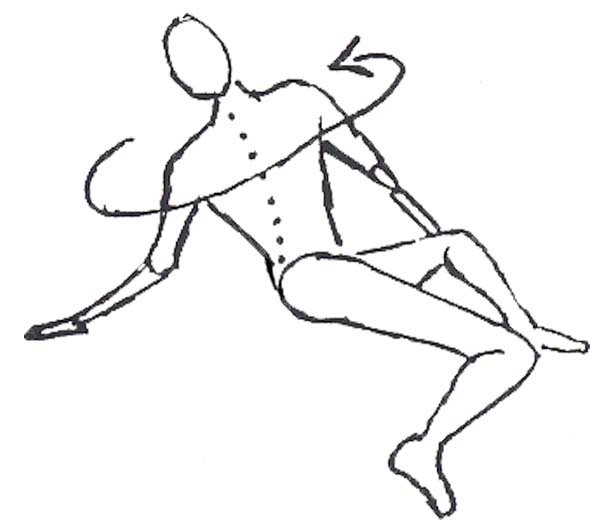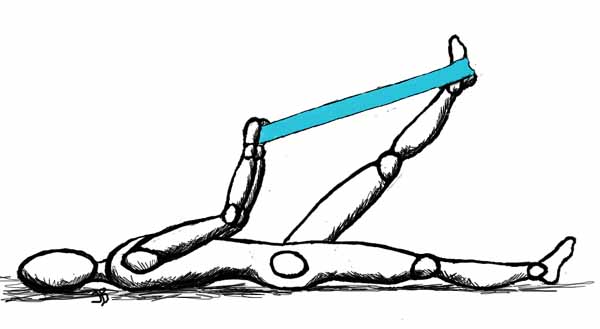Understanding Stretching – Why are we tight? – Part 1 of 4
Why do we have tight muscles?
 The muscles of our body are very interesting in many ways, and one of those ways is how they adapt to the postures we create. For example, right now you are probably sitting down as you read this. The common seated position for the hip is to be flexed forward about 90 degrees and the knee to be flexed about 90 degrees as well. This flexed position is not a balanced position for the hip or knee joint nor for the muscles that control them. When we sit with our hip and knee bent, the hip flexor and hamstring muscles shorten while the opposing muscles, the hip extensors and quadriceps, lengthen.
The muscles of our body are very interesting in many ways, and one of those ways is how they adapt to the postures we create. For example, right now you are probably sitting down as you read this. The common seated position for the hip is to be flexed forward about 90 degrees and the knee to be flexed about 90 degrees as well. This flexed position is not a balanced position for the hip or knee joint nor for the muscles that control them. When we sit with our hip and knee bent, the hip flexor and hamstring muscles shorten while the opposing muscles, the hip extensors and quadriceps, lengthen.
Now if we sit briefly and then stand back up again, the body does not adapt to the seated position. However, the adaptation response is very quick. In just 60 seconds of being held in a shorter than normal position, the muscles will respond by actually reducing the number of contractile elements within each muscle fiber. On the opposing side, muscles held longer than their normal length will increase the number of contractile elements within each muscle fiber. Now these contractile elements are microscopic, but since there are thousands upon thousands of muscle fibers making up these muscles, the effect can create a difference in the way our muscles feel and the way they function.
For most of us the act of sitting lasts longer than 60 seconds, in fact for many of us, sitting in one position may add up to many hours of our day. The longer we stay in one position, the more our body adapts to that position and considers it the ‘normal’ joint posture. This is one of the reasons that when we come out of a long held position our body seems to resist. I am sure that many of us can relate to a time when we unconsciously rested our neck or arm in some position on the couch while watching a movie only to find we had created a troublesome muscle shortness.
That hour or two on the couch left a lasting impression on our body but we probably were able to escape the tightness with just a little stretching. That posture didn’t seem to make a lasting impression, so why would any posture be a problem. The reality is that the more often we create a posture and the longer we hold the position, the more likely it will be reinforcing the muscle shortness created by our pose. Our bodies adapt to the postures we hold. This is precisely the reason we must not remain in inappropriate positions for any length of time, but also the reason we should ‘cross train’ our body to a variety of actions each day.
Stretching muscles is the act of lengthening them. Muscles control our joints. They are what make our joints active. What we seek to do when we stretch a muscle is lengthen it so that the muscle will allow the joint it controls to have full range of motion. The health and longevity of our joints depends on the joint being balanced so that the wear of cartilage is even. Uneven cartilage wear is the hallmark of osteoarthritis. Short muscles keep our joints from being balanced and thus short muscles contribute to the development of osteoarthritis.
The full range of motion in a joint is what we call flexibility. In yoga we admire those who have great flexibility as demonstrated in certain yoga poses. For many, traditional yoga poses are difficult due to a lack of full joint mobility, in other words, a lack of flexibility. Stretching our muscles can help to restore our flexibility and assist us in doing those traditional yoga poses.
Coming up next: Part 2 – Passive Stretching
Part 3
Part 4





